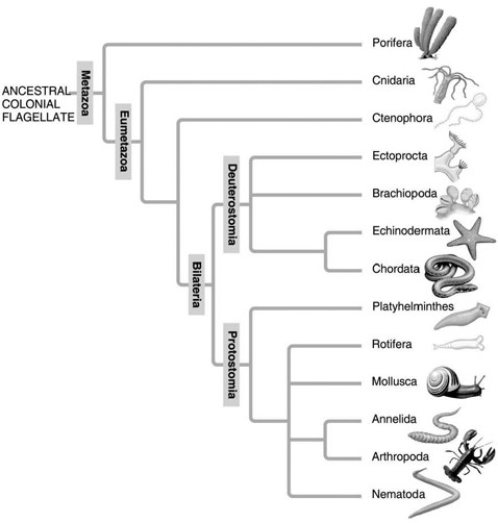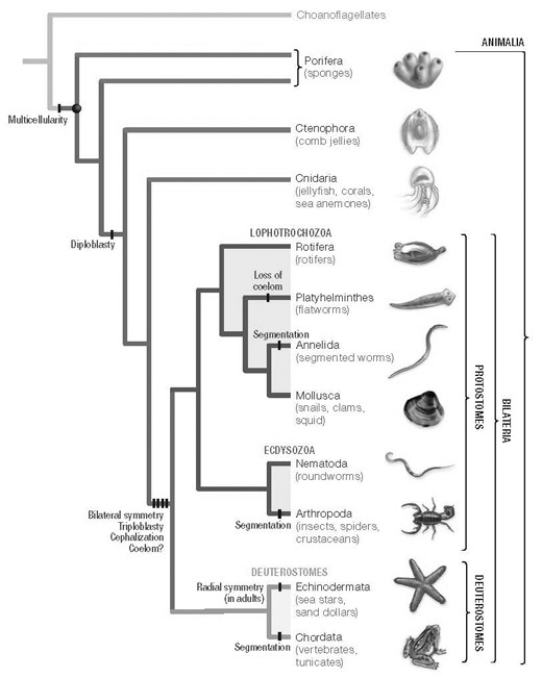Multiple Choice
A: Morphological phylogeny.  B: Molecular phylogeny.
B: Molecular phylogeny. 
In the traditional morphological phylogeny (A) , the phylum Platyhelminthes is depicted as a sister taxon to the rest of the protostome phyla and as having diverged earlier from the lineage that led to the rest of the protostomes. In the molecular phylogeny (B) , Platyhelminthes is depicted as a lophotrochozoan phylum. What probably led to this change?
A) Platyhelminthes ceased to be recognized as true protostomes.
B) Similarity of genetic information has led to realization that some morphological features are evolutionarily flexible (e.g., coelom formation) and so cannot be used as a diagnostic character.
C) All Platyhelminthes must have a well-developed lophophore as their feeding apparatus.
D) Platyhelminthes' close genetic ties to the arthropods became clear as their Hox gene sequences were studied.
Correct Answer:

Verified
Correct Answer:
Verified
Q18: In examining an unknown animal species during
Q19: Which tissue type, or organ, is NOT
Q20: Use the following information to answer the
Q21: <img src="https://d2lvgg3v3hfg70.cloudfront.net/TB3735/.jpg" alt=" From the information
Q22: To reproduce, many plants produce seeds-structures containing
Q24: <img src="https://d2lvgg3v3hfg70.cloudfront.net/TB3735/.jpg" alt=" -Dll is a
Q25: Among protostomes, which morphological trait has shown
Q26: Use the following information and figure to
Q27: You find a new species of worm
Q28: Choanoflagellates _.<br>A) are usually parasitic<br>B) are motile